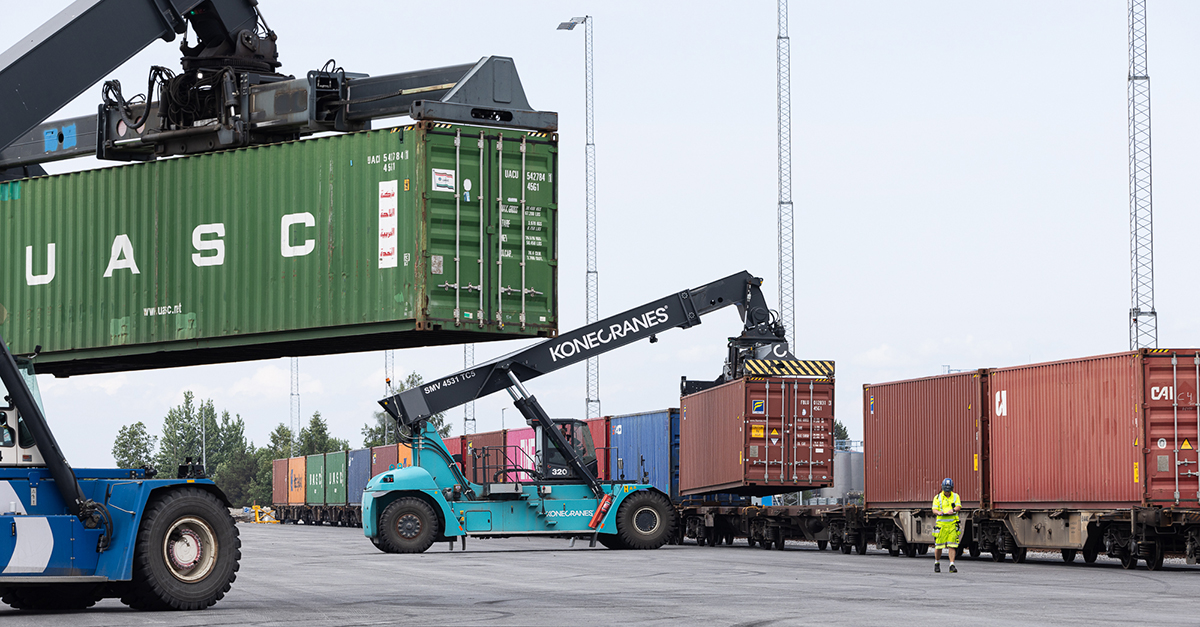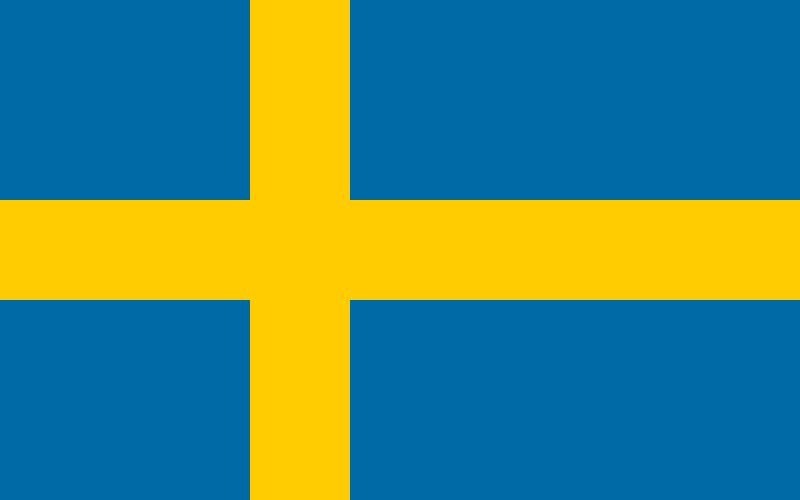Freight volumes via Umeå's facilities increased in 2022
Recent figures from Umeå's facilities show that the amount of goods to and from the region increased in 2022.
- In recent years, even during the pandemic, we have seen a stable increase in the number of handled cargo units (TEU) via Port of Umeå and Umeå combi terminal. Among other things, increased exports of wood products, Wasaline's new ferry and the ongoing new industrialization in the Northern Sweden are behind the increase, where Umeå is becoming the region's natural logistic node. We also feel that more people are willing to invest in more environmentally friendly transport and then shipping and rail are the natural alternatives, which could be another reason for the increase, says INAB's market strategist Daniel Rönnberg.

During last year, TEU handling via Umeå's railway facilities increased by 28.5%. Within shipping, the largest increases occurred in the handling of wooden products, +23.7% compared to 2021, as well as goods via Wasaline, +11.5% calculated in tonnes.
- In 2022, we opened the new intermodal railway terminal in the port with a direct line to the Port of Gothenburg. The interest has been great and for 2023 we see both more actors and departures via the port's railway terminal. In addition, Wasaline broke a new record in the number of shipping units in 2022. Also pleasing is a clear increase in the wooden goods segment, which is an important part of the total exports from the port of Umeå, says Christer Nederstedt, sales and marketing manager at Kvarken Ports, which operates the port of Umeå.
Modern railway terminals, strategically located
Umeå combi terminal forms the heart of Umeå's railway infrastructure. It is centrally located on Västerslätt and is operated by Sandahls Logistik with a focus on intermodal transport to and from terminals in southern Sweden. Since the terminal was inaugurated in 2010, it has presented increasing freight volumes every year.
- It is nice to hear that the demand for sustainable logistics solutions is increasing. We also see that capacity requests from actors in the transport industry have increased significantly before 2023. For example, we have doubled the number of railway operators that serve Umeå with freight trains. At our facilities, we handle all types of goods in an efficient manner and thanks to the breadth of the range, we can manage seamless transport changes between boat, train and truck, which optimizes an intermodal logistics flow, says Daniel Rönnberg.
The municipality's newest railway terminal north of Umeå is being completed and can be put into use when the Norrbothnia line to Dåva is ready, estimated for 2025. Umeå will then have three intermodal railway terminals all strategically placed to serve the regional business community. The connection to Dåva business park and Norrbotniabanan enables great advantages in the continued development of the area with land planning of 600 ha and the ambition to develop the area into an international center for green innovation and recycling.
Large catchment area for Umeå's logistics facilities
The goods that pass through Umeå's facilities supply the entire region and mostly consist of processed forest raw materials, industrial and consumer goods. The catchment area for Umeå combi terminal stretches from Örnsköldsvik in the south to Skellefteå in the north and the border with Norway in the west. The port covers an even larger area as you also reach east and into Ostrobothnia.
- Umeå is geographically very well located as we are at a crossroads between two European roads, have good connections with proximity to Finland and Norway, have northern Sweden's only ice-free port and that we have access to all modes of transport. Umeå functions as a growth engine for Norrland and grows by approx. 1,600 inhabitants annually, which overall makes us a natural logistics hub for the entire region, says Daniel Rönnberg.
Logistics solutions for a better environment
Shipping via sea and rail are often very advantageous logistics solutions, both when it comes to cost and time, but above all from an environmental aspect. The government's freight transport strategy has clear transport policy goals which require domestic transport to be shifted to more environmentally friendly modes of transport such as rail and sea. The municipality's investments in, among other things, railway terminals and port infrastructure create good conditions for the region's business community to develop climate-smart logistics solutions.

 Svenska
Svenska
